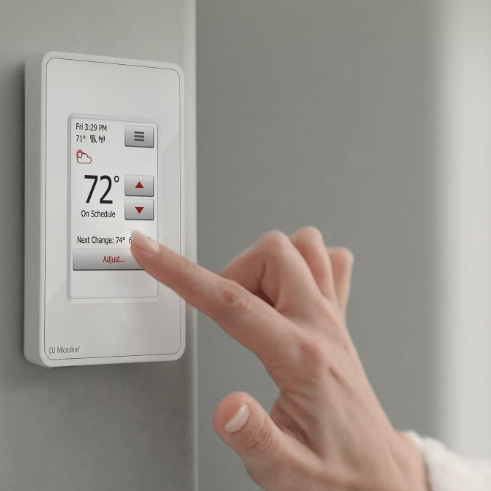
(502) 783-7995
(502) 783-7995


Electric floor heating is a popular and efficient method of warming homes, offering a luxurious and consistent heat source that can be especially effective under hardwood floors. This guide explores the various aspects of electric underfloor heating for hardwood floors.
One of the primary benefits of electric underfloor heating is the comfort it provides. Unlike traditional radiators that can create uneven heating, underfloor heating distributes warmth uniformly across the entire floor surface.
This creates a snug and inviting atmosphere, especially during colder months. Electric underfloor heating is silent and hidden from view, allowing for greater flexibility in interior design without the need to accommodate bulky radiators.
Electric underfloor heating is also energy efficient. By operating at lower temperatures compared to conventional heating systems, it can reduce energy consumption and lower utility bills.
This efficiency is heightened when used with a programmable thermostat, allowing homeowners to schedule heating periods according to their daily routines and preferences.
When considering electric underfloor heating for hardwood floors, it's essential to choose the right type of wood. Not all hardwoods are suitable for this type of heating due to their susceptibility to changes in temperature and humidity.
Engineered hardwood, made of multiple layers of wood with a top layer of hardwood veneer, is generally more stable and less prone to warping or shrinking compared to solid hardwood. This makes it an excellent choice for underfloor heating systems.
The thickness of the wood is another important factor. Thinner boards, typically between 0.5 and 0.7 inches, allow heat to transfer more efficiently to the surface. Thicker boards might reduce the effectiveness of the heating system, leading to longer warm-up times and less efficient heat distribution.
Installing electric underfloor heating under hardwood floors requires careful planning and professional expertise. The process begins with assessing the existing subfloor to ensure it is clean, dry, and level. Any irregularities can affect the performance and longevity of the heating system.
Next, an insulating layer is installed to prevent heat loss and improve energy efficiency. The electric floor heating mats or radiant floor heating cables are then laid out according to the manufacturer's instructions, providing even coverage across the entire floor area. It's important to avoid overlapping the heating elements to prevent overheating and potential damage.
Once the heating system is in place, a layer of underlayment suitable for hardwood floors is added. This underlayment acts as a buffer, protecting the heating elements and providing a smooth surface for the hardwood planks.
The hardwood flooring is then installed on top, following standard installation practices for the specific type of wood being used.
Effective temperature control is vital for the longevity and performance of electric underfloor heating systems. Using a thermostat designed for underfloor heating allows for precise temperature regulation, preventing the floor from becoming too hot and potentially damaging the wood.
Programmable thermostats are particularly beneficial, enabling homeowners to set different temperatures for various times of the day and night, optimizing comfort and energy efficiency.
Regular maintenance of electric underfloor heating systems is relatively straightforward. The most important test is the thermostats GFCI function, this can be done by simply pressing and resetting GFCI button.
Any repairs or adjustments should be carried out by a qualified professional to avoid damaging the system or the hardwood floor.
While electric underfloor heating offers numerous advantages, there are some considerations to keep in mind. The initial installation cost can be higher compared to traditional heating systems, particularly if retrofitting an existing floor. However, the long-term energy savings and increased comfort often offset this initial expense.
Electric underfloor heating systems can be less effective in poorly insulated homes or rooms with high ceilings, as more energy is required to maintain a consistent temperature. Providing proper insulation and considering supplementary heating options in such cases can help maximize the efficiency of the system.
Electric underfloor heating is considered an eco-friendly heating solution, especially when powered by renewable energy sources such as solar or wind power. By reducing reliance on fossil fuels and operating at lower temperatures, it contributes to lower carbon emissions and a smaller environmental footprint.
Homeowners looking to improve their green credentials can further improve energy efficiency by pairing underfloor heating with smart home technologies that optimize heating schedules and monitor energy consumption.
Electric underfloor heating for hardwood floors offers a modern, efficient, and luxurious heating solution. Its benefits make it an attractive option for homeowners seeking comfort and sustainability.
Electric underfloor heating can provide years of reliable and efficient warmth, elevating the overall living experience.

Our under floor heating experts will work on the design and layout of your project, for free!